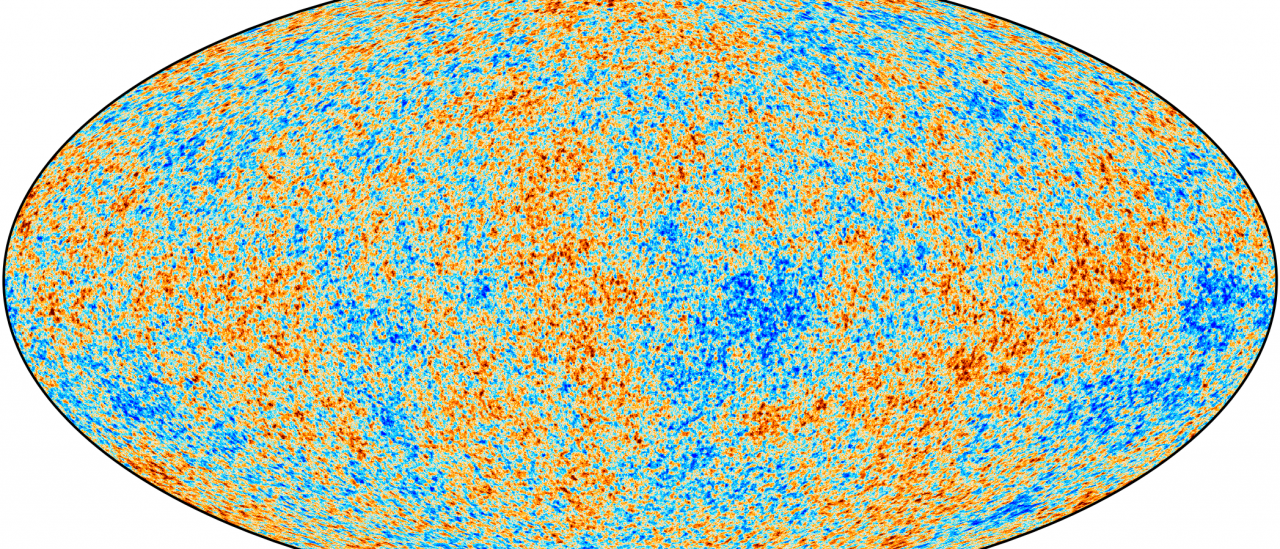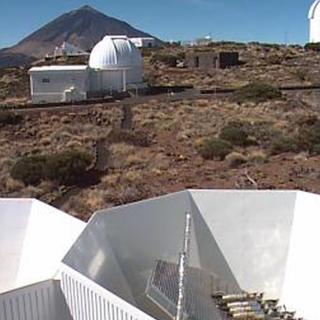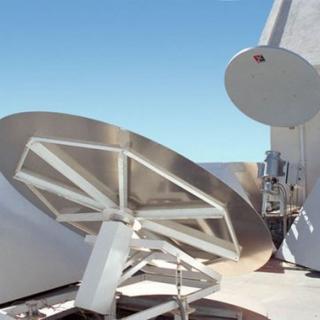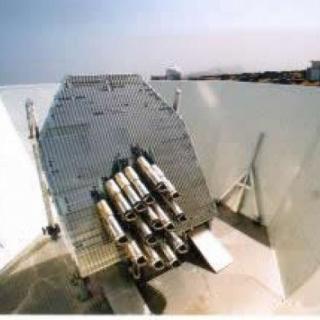Grants related:
General
The general goal of this project is to determine and characterize the spatial and spectral variations in the temperature and polarisation of the Cosmic Microwave Background in angular scales from several arcminutes to several degrees. The primordial matter density fluctuations which originated the structure in the matter distribution of the present Universe, left imprinted inhomogeneities in the CMB temperature distribution, that are mathematically encoded in the so-called angular power spectrum. Initially, pioneering experiments like the COBE satellite (whose results deserved the Nobel Prize on Physics 2006) or the Tenerife CMB experiment demonstrated in the 90s that the level of anisotropy was about one part in a hundred thousands at angular scales of several degrees. Obtaining CMB maps at various frequencies with sufficient sensitivity to detect structures at this level is of fundamental importance to extract information on the power spectrum of primordial density fluctuations, to prove the existence of an inflationary period in the Early Universe and to establish the ultimate nature of the dark matter and dark energy. Recently, the WMAP satellite obtained CMB maps with unprecedented sensitivity that allowed to set restrictions on a large number of cosmological parameters.
The focus of this project is to undertake measurements at gradually higher angular resolutions and sensitivities, by using different experiments that have been operative from the Teide Observatory, like the Tenerife experiment, the IAC-Bartol experiment or the JBO-IAC interferometer. More recently, the Very Small Array interferometer performed observations between 1999 and 2008. At that time the COSMOSOMAS experiment was also operative, its goal having been not only the characterization of the primary CMB anisotropies but also the study and characterization of the Galactic foreground contamination. In more recent years the activity in this project has focused in the scientific exploitation of data from the Planck satellite, and in the development, operation and exploitation of the QUIJOTE experiment. Now that the Planck mission has been completed and finished, the activity is focused in the scientific exploitation of QUIJOTE, in the development of new instrumentation for QUIJOTE, and in in the development of new experiments that are being deployed or that will be deployed at the Teide Observatory: GroundBRID, STRIP, KISS and TMS.
Members
Results
- 6-7 june: XV QUIJOTE Scientific Meeting (IFCA, Santander)
- July: publication of the final results (12 articles) and data from the Planck satellite.
- 15-19 october: "CMB foregrounds for B-mode studies" conference, organised within the Radioforegrounds proyect, IV AME workshop, and XVI QUIJOTE Scientific Meeting (all these eventes were celebrated at the IAC)
- October: installation of the dome of the GroundBIRD experiment, at the Teide Observatory.
- December: aceptation of the third QUIJOTE scientific article (Poidevin et al. 2019)
Scientific activity
Related publications
-
Planck early results. VIII. The all-sky early Sunyaev-Zeldovich cluster sample
We present the first all-sky sample of galaxy clusters detected blindly by the Planck satellite through the Sunyaev-Zeldovich (SZ) effect from its six highest frequencies. This early SZ (ESZ) sample is comprised of 189 candidates, which have a high signal-to-noise ratio ranging from 6 to 29. Its high reliability (purity above 95%) is further
Planck Collaboration et al.Advertised on:
122011 -
Planck early results. VII. The Early Release Compact Source Catalogue
A brief description of the methodology of construction, contents and usage of the Planck Early Release Compact Source Catalogue (ERCSC), including the Early Cold Cores (ECC) and the Early Sunyaev-Zeldovich (ESZ) cluster catalogue is provided. The catalogue is based on data that consist of mapping the entire sky once and 60% of the sky a second time
Planck Collaboration et al.Advertised on:
122011 -
Planck early results. IX. XMM-Newton follow-up for validation of Planck cluster candidates
We present the XMM-Newton follow-up for confirmation of Planck cluster candidates. Twenty-five candidates have been observed to date using snapshot (~10ks) exposures, ten as part of a pilot programme to sample a low range of signal-to-noise ratios (4 < S/N < 6), and a further 15 in a programme to observe a sample of S/N > 5 candidates. The
Planck Collaboration et al.Advertised on:
122011 -
Detection of Anomalous Microwave Emission in the Pleiades Reflection Nebula with Wilkinson Microwave Anisotropy Probe and the COSMOSOMAS Experiment
We present evidence for anomalous microwave emission (AME) in the Pleiades reflection nebula, using data from the seven-year release of the Wilkinson Microwave Anisotropy Probe and from the COSMOSOMAS (Cosmological Structures on Medium Angular Scales) experiment. The flux integrated in a 1° radius around R.A. = 56fdg24, decl. = 23fdg78 (J2000) is 2
Génova-Santos, R. et al.Advertised on:
122011 -
Constraints on the Polarization of the Anomalous Microwave Emission in the Perseus Molecular Complex from Seven-year WMAP Data
We have used the seven-year Wilkinson Microwave Anisotropy Probe (WMAP) data in order to update the measurements of the intensity signal in the G159.6-18.5 region within the Perseus molecular complex and to set constraints on the polarization level of the anomalous microwave emission in the frequency range where this emission is dominant. At 23, 33
López-Caraballo, C. H. et al.Advertised on:
32011 -
Interstellar C2 in the Perseus molecular complex: excitation temperature and density of a molecular cloud with anomalous microwave emission
Interstellar absorption lines up to J″= 10 in the (2, 0) band and up to J″= 6 in the (3, 0) band of the C2 A1Πu-X1Σ+g system are detected toward star Cernis 52 (BD +31°640) in the Perseus molecular complex. The star lies in a reddened line of sight where various experiments have detected anomalous microwave emission spatially correlated with dust
Iglesias-Groth, S.Advertised on:
32011 -
Infrared spectroscopy of hydrogenated fullerenes (fulleranes) at extreme temperatures
The infrared spectra, as well as the integrated molar absorptivity (Ψ) and the molar extinction coefficient (ɛ) of each infrared transition of the hydrogenated fullerenes (known as fulleranes) C60H36, C60H18 and C70H38, and a mixture of fulleranes generally referred to as 77 per cent of C60Hx and 22 per cent C70Hy with x≈y > 30, are presented and
Iglesias-Groth, S. et al.Advertised on:
72012 -
A search for naphthalene in diffuse interstellar clouds
We have obtained high-resolution optical spectroscopy of 10 reddened O-type stars with Ultraviolet and Visual Echelle Spectrograph at Very Large Telescope to search for interstellar bands of the naphthalene cation (C10H8+) in the intervening clouds. No absorption features were detected near the laboratory strongest band of this cation at 6707 Å
Iglesias-Groth, S. et al.Advertised on:
32012 -
A prescription for the conditional mass function of dark matter haloes
The unconditional mass function (UMF) of dark matter haloes has been determined accurately in the literature, showing excellent agreement with high-resolution numerical simulations. However, this is not the case for the conditional mass function (CMF). Here, we propose a simple analytical procedure to derive the CMF by rescaling the UMF to the
Rubiño-Martín, J. A. et al.Advertised on:
62008
Related talks
No related talks were found.Related conferences
-
XIX Canary Islands Winter School of Astrophysics "The Cosmic Microwave | Background: from quantum fluctuations to the present Universe"Tenerife, Canary IslandsSpainDate-Past
News
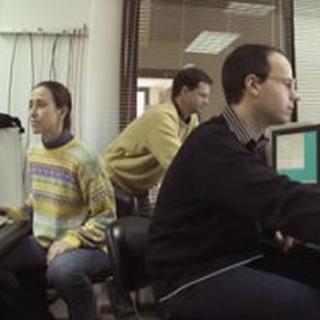
IAC participation in the HERSCHEL AND PLANCK SURVEYOR space missions. Since 1996 the Instituto de Astrofísica de Canarias has been a contributor to the concept and development processes for the scientific payload of the European Space Agency's (ESA) Herschel Space Observatory and Planck Surveyor missions.
